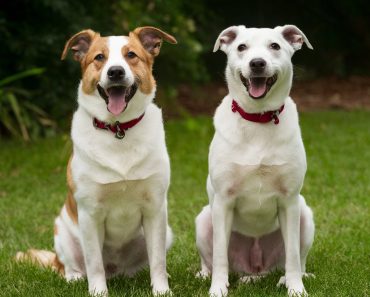Depression in dogs is a real concern and can manifest in various ways. Just like humans, dogs can experience periods of sadness, lethargy, and changes in behavior due to factors such as illness, loss of a companion (human or animal), changes in routine, or traumatic experiences. Some common signs of depression in dogs include:

Depression in Dogs
- Lack of Interest: A depressed dog may lose interest in activities they once enjoyed, such as playing fetch or going for walks.
- Changes in Appetite: Depression can cause changes in appetite, leading to either decreased or increased food intake.
- Sleep Disturbances: Dogs may sleep more than usual or have trouble sleeping when they’re depressed.
- Withdrawal: Depressed dogs may become more withdrawn and seek out less interaction with their human family members or other pets.
- Lethargy: A lack of energy and enthusiasm is a common sign of depression in dogs. They may seem tired all the time and be less willing to engage in physical activities.
- Excessive Licking or Chewing: Some dogs may exhibit compulsive behaviors like excessive licking or chewing, which can be a sign of stress or anxiety.
- Aggression or Destructive Behavior: In some cases, depression can manifest as aggression towards people or other animals, or as destructive behavior such as chewing on furniture or excessive barking.
Determining whether a dog is depressed or simply lazy can be tricky, as both can exhibit similar behaviors. Here are some signs that may indicate depression in dogs:
- Changes in Appetite: Loss of appetite or overeating can indicate emotional distress.
- Lethargy: If your dog shows little interest in activities they used to enjoy or seems unusually tired, it could be a sign of depression.
- Withdrawal: Dogs may become more withdrawn or seek solitude if they are feeling depressed.
- Changes in Sleep Patterns: Just like humans, dogs may sleep more or less when they’re feeling down.
- Lack of Interest in Socializing: Depressed dogs may avoid interaction with humans or other pets.
- Excessive Licking or Chewing: Dogs may engage in self-soothing behaviors like excessive licking or chewing when they are feeling anxious or depressed.
- Aggression or Destructive Behavior: Some dogs may become more irritable or engage in destructive behaviors when they are feeling depressed.
- Loss of Interest in Activities: If your dog no longer seems interested in going for walks, playing fetch, or engaging in other activities they used to enjoy, it could be a sign of depression.
- Changes in Grooming Habits: Depressed dogs may neglect their grooming, leading to a dull coat or matted fur.
- Vocalization: Some dogs may whine, whimper, or bark excessively when they are feeling anxious or depressed.
If you notice several of these signs persisting for an extended period, it’s a good idea to consult with your veterinarian. They can rule out any underlying medical issues and provide guidance on how to help your dog feel better. If your dog is determined to be physically healthy, they may recommend behavioral interventions or even medication to help manage the depression.
On the other hand, if your dog seems lazy but doesn’t exhibit these other signs of depression, it might just be their personality or a result of aging. Some dogs are naturally more laid-back and less energetic than others. However, if the laziness seems sudden or extreme, it’s still a good idea to have your dog checked by a vet to rule out any medical causes.
How do you cheer up a depressed dog?
Cheering up a depressed dog involves providing comfort, stimulation, and reassurance. Here are some ways to help lift your dog’s spirits:

Depression in Dogs
- Maintain a Routine: Dogs thrive on routine, so try to stick to a consistent schedule for feeding, walks, playtime, and rest. Predictability can help your dog feel secure and reduce anxiety.
- Physical Exercise: Regular exercise is essential for a dog’s physical and mental well-being. Take your dog for walks, engage in interactive play sessions, or try activities like agility training to provide mental stimulation and help release pent-up energy.
- Engage in Interactive Play: Spend quality time engaging in activities that your dog enjoys, such as playing fetch, tug-of-war, or hide-and-seek. Interactive play not only provides physical exercise but also strengthens the bond between you and your dog.
- Offer Comfort and Affection: Show your dog extra love and attention through gentle petting, cuddling, and grooming. Physical touch can help reduce stress and anxiety in dogs and reassure them that they’re loved and cared for.
- Provide Mental Stimulation: Introduce new toys, puzzles, or games that challenge your dog mentally and keep them engaged. Mental stimulation can help prevent boredom and improve your dog’s overall mood.
- Create a Safe Space: Designate a quiet, comfortable area in your home where your dog can retreat to when they need some alone time. Make sure this space is equipped with their favorite toys, blankets, and bedding.
- Socialization: Arrange playdates with other friendly dogs or invite friends and family members over for supervised visits. Positive social interactions can boost your dog’s mood and provide opportunities for companionship and play.
- Consider Professional Help: If your dog’s depression persists or worsens despite your efforts, consider seeking guidance from a veterinarian or a certified animal behaviorist. They can help identify underlying issues and recommend appropriate interventions or therapies.
Please remember to be patient and considerate of your dog during this period. Just like humans, dogs may take some time to recover from periods of sadness or distress, but with love, patience, and support, they can overcome their feelings of depression and return to their happy, playful selves.







